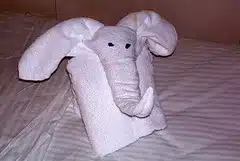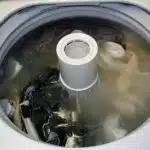As a laundry care expert, I understand the importance of selecting the right washer settings for clothes and towels. Selecting the appropriate settings not only ensures that your garments are cleaned effectively but also helps in extending their lifespan. However, with so many options available on modern washing machines, it can be overwhelming to know which setting is best for each type of fabric.
To make the process less daunting, it’s essential to understand the different settings available and how they affect your laundry. This article will outline some tips on how to select washer settings for clothes and towels to ensure that they come out clean and fresh every time. Whether you’re a busy parent or someone who loves serving others, implementing these tips will help simplify your laundry routine while ensuring excellent results.
Understanding Your Washing Machine
In this day and age, washing machines are essential household appliances. They make laundry chores easier and less time-consuming than ever before. But with the convenience comes the responsibility of proper washer maintenance. Without it, common washer problems such as leaks, clogs, and breakdowns can occur more frequently.
One way to prevent these problems is by regularly cleaning your washer. This includes wiping down the drum and door seal after each use, running a cycle with hot water and vinegar once a month, and leaving the door open between washes to allow for air circulation. Additionally, be mindful of how much laundry you load into the machine at once. Overcrowding can cause strain on the motor and other parts of the washer.
While maintaining your washing machine is important for its longevity, understanding how to properly select washer settings is also crucial for achieving clean clothes and towels. In general, lighter fabrics require delicate cycles while heavier fabrics like towels need more rigorous agitation. It’s important to read clothing labels for specific care instructions and to separate loads based on color to prevent dye transfer. With these tips in mind, you’ll be well on your way to mastering your washing machine!
To effectively sort your laundry before washing it, begin by separating whites from colors. This will help you avoid any color bleeding that may occur during the wash cycle. Additionally, separate lightweight fabrics from heavy ones to ensure that each item receives proper cleaning attention without causing damage or wear-and-tear over time. By taking just a few extra minutes before starting each load of laundry, you can extend the life of your clothing while keeping them looking their best!
Sorting Your Laundry
Laundry sorting is a crucial step in ensuring that your clothes come out clean and undamaged. Proper sorting involves separating fabrics by color, weight, and texture. Dark-colored garments should be washed separately from light-colored ones to prevent color bleeding, while delicates should also be separated from heavy-duty materials to avoid snagging or tearing.
When it comes to towels and linens, it’s important to sort them properly as well. Towels can create a lot of lint during washing, so they should be washed separately from clothing items that are prone to collecting lint. Additionally, towels and linens should be sorted by fabric type – cottons can be washed together, while silk or satin sheets should be washed separately.
To make the laundry sorting process easier, consider using a laundry hamper with multiple compartments for different types of fabrics. This will save you time and ensure that each load is washed correctly. By properly sorting your laundry, you can prolong the life of your clothes and linens and keep them looking their best.
Transition: Now that you’ve sorted your laundry, the next step in achieving clean clothes is pre-treating stains.
Pre-Treating Stains
Like a painter selecting colors for their canvas, choosing the right washer settings for your clothes and towels can make all the difference in the appearance and longevity of your items. But before we dive into the specifics, it’s important to note that stain removal techniques should always be applied prior to washing. Pre-treat any stubborn stains with specialized products or with a mixture of detergent and water.
Once you’ve pre-treated any stains, it’s time to consider pre-wash options. In addition to stain removal treatments, some garments may need a little extra care before going through a regular wash cycle. Delicate fabrics, such as silk or lace, should be hand washed or put through a gentle cycle using cold water. Items that are heavily soiled or have been worn during physical activity may benefit from a pre-wash cycle with warm water.
While there are many different wash settings available on modern machines, one of the most important considerations is choosing the right water temperature. Hot water is best for whites and heavily soiled items as it helps kill bacteria and remove dirt more effectively. Warm water works well for colors and moderately soiled items while cold water is perfect for darks and lightly soiled fabrics. By taking these factors into account when selecting washer settings, you’ll help ensure that your clothes come out looking clean and fresh every time.
Choosing The Right Water Temperature
Selecting the appropriate water temperature is essential to ensure that your clothes and towels are cleaned effectively. Adjusting load size is equally important, as it directly affects the amount of water needed for washing. Using too much or too little water can result in poor cleaning performance or damage to the fabrics. Therefore, it’s essential to choose a washer setting that suits your load size.
When selecting the right water temperature, consider the fabric type and soil level of your clothes and towels. Hot water is effective in removing tough stains and sanitizing fabrics; however, it can cause colors to fade and shrink certain materials. Coldwater is suitable for delicate items and helps prevent colors from bleeding. Warm water is an excellent option for everyday laundry items that require a balance between stain removal and fabric care.
In addition to considering water temperature, you should also take into account the hardness of your water supply. Hard water contains high levels of minerals like calcium and magnesium, which can leave deposits on fabrics, making them feel stiff and rough. If you have hard water, consider using a detergent that contains chelating agents or adding a laundry booster specifically designed for hard water to help prevent mineral buildup in your clothes and towels.
Transition: Now that we’ve discussed how to choose the right water temperature based on fabric type, soil level, and water hardness let’s explore how using the appropriate detergent can improve cleaning performance further.
Using The Appropriate Detergent
Imagine you have a new washing machine and detergent, but your clothes still come out looking dull and dingy. You might be tempted to blame the machine or the water quality, but more often than not, it’s the type of detergent you’re using that’s causing the problem. Choosing the right detergent is essential for getting your clothes clean and keeping them looking their best.
Here are some tips for selecting the appropriate detergent:
- Consider eco-friendly options – If you’re environmentally conscious, choose an eco-friendly detergent that’s free of harmful chemicals and toxins. These detergents are gentle on your clothes and better for the planet.
- Compare liquid and powder detergents – Liquid detergents are great for pre-treating stains and are easy to measure. Powder detergents are more effective at removing dirt and grime but can leave residue if not properly dissolved.
- Read labels carefully – Look for detergents that are formulated specifically for your type of washing machine (front load or top load) as well as your clothes (delicate fabrics vs. heavy-duty). Be sure to follow instructions carefully to avoid damage to your fabrics or machine.
By choosing the right detergent, you’ll not only get cleaner clothes but also extend their life span by preventing damage from harsh chemicals or improper use. In the next section, we’ll discuss how fabric softeners and conditioners can help keep your clothes looking fresh and feeling soft.
Using Fabric Softeners And Conditioners
When it comes to laundry care, fabric softeners and conditioners are often used to add a pleasant fragrance and soften clothes. However, many commercial products contain chemicals that can cause skin irritation and damage fabrics over time. Using natural alternatives can be a safer and more eco-friendly option.
One alternative is to use white vinegar as a fabric softener. Add 1/4-1/2 cup of white vinegar to the rinse cycle or pour directly into the fabric softener dispenser. The acidity of the vinegar will help break down detergent residue, leaving clothes feeling softer and fresher. Another option is to use wool dryer balls, which can help reduce static cling and soften clothes without the need for chemical-laden dryer sheets.
It’s important to note that not all fabrics are created equal, so it’s important to avoid fabric damage when using any type of fabric softener or conditioner. Avoid using fabric softeners on towels or other items made from absorbent materials, as they can leave a coating on the fibers that reduces absorbency. Additionally, never use fabric softeners on flame-resistant clothing or bedding, as they can reduce their effectiveness in preventing fire-related injuries.
| Pros | Cons |
|---|---|
| Natural alternative to chemical-laden products | May not be as effective at removing static cling |
| Eco-friendly option | Can cause staining if poured directly onto fabrics |
| Safe for sensitive skin | May not work well with hard water |
| Inexpensive |
By using natural alternatives and being mindful of potential fabric damage, you can extend the life of your clothes while also reducing your environmental impact. Next up: setting the wash cycle for optimal cleaning results.
Setting The Wash Cycle
Now that you’ve learned about using fabric softeners and conditioners, it’s time to move on to setting the wash cycle. It’s important to select the correct cycle for your clothes and towels in order to ensure they come out clean and undamaged. The first thing you need to do is check your washer capacity. Overloading your washer can result in poorly washed clothes as well as damage to the machine.
Time management during laundry day is also crucial. Make sure you have enough time set aside for each load of laundry so that you don’t rush through the process and end up damaging your clothes or your machine. Take into consideration factors such as pre-treatment, wash cycle length, and drying time when planning out your laundry day.
In order to help you select the proper wash cycle for your clothes and towels, here are some tips:
- Use a gentle cycle for delicate fabrics such as silk or lace
- Use a normal cycle for everyday items like t-shirts, jeans, and sheets
- Use a heavy-duty cycle for heavily soiled items like towels or work uniforms
- Use a quick wash cycle if you’re short on time but still need clean clothes
Understanding spin speeds is another important aspect of selecting the right wash cycle. We’ll cover that in more detail in the next section. By following these tips and taking into consideration washer capacity and time management, you’ll be able to achieve clean and fresh-smelling laundry every time.
Understanding Spin Speeds
Some may argue that a high spin speed is always better as it ensures clothes come out drier, but this is not necessarily the case. While there are pros and cons to different spin speeds, it’s important to understand their impact on clothes before selecting the ideal setting. High spin speeds can cause more wear and tear on fabrics, leading to faster deterioration of clothing items.
For towels and sturdier fabrics like denim, a higher spin speed can be beneficial as they can handle the force without damaging the fibers. However, when it comes to delicate fabrics such as silk or lace, slower spin speeds are necessary to prevent damage. It’s also worth noting that certain fabrics may require different ideal spin speeds depending on their weight and thickness.
When choosing a spin speed for each load of laundry, take into account the type of fabric being washed and its care instructions. A general rule of thumb is to use a lower spin speed for delicate items and higher for sturdier ones. By understanding the impact of different spin speeds on clothes and selecting an appropriate setting accordingly, you can ensure your laundry is washed in a way that prolongs its lifespan while still achieving optimal cleaning results.
Delicate Fabrics
- When selecting a detergent for delicate fabrics, it is important to choose one that is specifically formulated for use with these items.
- Choosing a warm water setting is often the best choice for delicate fabrics, as it provides the most effective way to remove dirt and bacteria without being too harsh.
- It is also important to select a low spin speed when washing delicate fabrics, as this will help to reduce the risk of damage to the fabric.
- Additionally, when handwashing delicate fabrics, it is important to use a gentle detergent and to avoid using any harsh scrubbing motions.
- When it comes to drying delicate fabrics, it is best to air dry them on a flat surface and avoid using a dryer or direct sunlight.
- Lastly, it is important to read and follow the care label instructions on delicate fabrics to ensure that they are properly washed and dried.
Detergent Selection
When it comes to selecting the right detergent for delicate fabrics, one must consider several factors. First and foremost, the detergent dosage should be appropriate as using too much can harm the delicate fibers while using too little may not clean them effectively. It is advisable to read the label of the detergent carefully to determine the recommended dosage per load. Additionally, eco-friendly options are an excellent choice for delicate fabrics as they are gentle on the environment and do not contain harsh chemicals that may damage or fade colors.
One of the most important things to keep in mind when selecting a detergent for delicate fabrics is to avoid using bleach or fabric softeners. These products contain strong chemicals that can weaken and damage fibers over time, leading to holes or tears in delicate clothing items. Instead, opt for a mild detergent specifically formulated for delicate fabrics such as silk, wool or lace. Some detergents even come with added fabric conditioners that help maintain the softness and suppleness of these fabrics.
Finally, it is essential to follow care instructions on each garment’s label carefully. Delicate fabrics require special attention during laundering, such as washing at low temperatures and avoiding tumble drying whenever possible. By following these guidelines and choosing an appropriate detergent dosage and eco-friendly option, your favorite delicate clothes will remain fresh and vibrant without sacrificing their quality or durability.
Water Temperature
When it comes to taking care of delicate fabrics, selecting the right detergent is not the only consideration. Another crucial factor is the water temperature during laundering. The temperature of the water can have a significant impact on the fabric’s quality and durability. While hot water may seem like a logical choice for getting rid of tough stains, it can also cause shrinkage, fading, and damage to delicate fibers. On the other hand, cold water has several benefits that make it an ideal option for washing delicate fabrics.
One of the primary benefits of using cold water is that it helps prevent shrinking and fading in delicate fabrics. Hot water causes fibers to expand and loosen their structure, while cold water keeps them intact, maintaining their shape and texture. Additionally, washing clothes in cold water saves energy as there is no need to heat up the water before use. This makes it an eco-friendly option that reduces your carbon footprint while keeping your clothes clean and fresh.
In conclusion, when it comes to laundering delicate fabrics such as silk or lace, using cold water is highly recommended. It provides several benefits such as preventing shrinkage and fading while saving energy at the same time. However, this does not mean that you should avoid hot water altogether; some items may require warm or hot water for effective cleaning. Always check the care label on each garment to determine its specific laundry requirements and adjust your washing machine accordingly for best results.
Spin Speed
When it comes to laundering delicate fabrics, using the right spin speed can make a significant difference in maintaining their quality and prolonging their lifespan. The spin speed of a washing machine refers to how fast the drum rotates during the final spin cycle, which determines how much water is removed from the clothes before drying. While high spin speeds may seem like an efficient way to remove excess moisture, they can also cause damage or wear and tear on delicate fabrics.
One of the benefits of using a low spin speed for delicate fabrics is that it reduces the risk of damage or tearing. High spin speeds create more centrifugal force, which can stretch or distort the fibers, especially in lightweight or delicate materials such as silk or lace. Lowering the spin speed can help maintain the fabric’s shape and texture while ensuring that excess water is still removed effectively. However, one drawback of low spin speeds is that they may leave clothes feeling wetter than usual after washing.
On the other hand, using a high spin speed has its advantages as well. It significantly reduces drying time by removing more moisture from the clothes during spinning, saving energy and time in the long run. However, high-speed spinning can also cause wrinkling, tangling, and damage to some fabrics if not done correctly. Therefore when selecting your machine’s spin cycle setting for delicate pieces always check their care label for specific laundry requirements and adjust accordingly for best results.
Heavy-Duty Fabrics
Moving on from delicate fabrics, we must now discuss heavy-duty fabrics and the importance of selecting the right cycle. Heavy-duty fabrics include items such as denim, canvas, and workwear that require a more vigorous wash. When selecting the appropriate cycle for these items, it is important to take into account the level of dirt and stains present. For heavily soiled items, opt for a longer wash cycle with high agitation to ensure a thorough clean.
In addition to choosing the right cycle, pre-treating tough stains is crucial for heavy-duty fabrics. Stains like grease or oil may require special attention before being added to the washing machine. Consider using a stain remover or pre-wash treatment to tackle these tough spots before washing. In some cases, soaking the item in warm water with detergent can also help loosen stubborn stains.
Proper care and maintenance of heavy-duty fabrics will not only prolong their lifespan but also preserve their appearance and functionality. By choosing the right cycle and pre-treating tough stains, you can ensure that your workwear or denim jeans are clean and ready for their next use. In our next section, we will dive into another common type of fabric: towels and linens.
Towels And Linens
To properly care for your towels and linens, it is important to understand the different fabric types that make up these items. Cotton and linen are common materials used for towels, while sheets and pillowcases are often made from a blend of cotton and polyester. It is essential to read the care label on each item before washing, as some fabrics require specific instructions such as delicate cycles or low heat drying.
The frequency at which you wash your towels and linens depends on how often they are used. Bath towels should be washed after three to four uses, while hand towels can be washed after every use. Sheets should be washed every one to two weeks, depending on personal preference. Additionally, it is recommended to wash new towels and linens before first use to remove any residue from the manufacturing process.
To maximize the lifespan of your towels and linens, consider following these tips:
- Avoid using fabric softeners as they can reduce absorbency.
- Wash lighter colored items separately from darker colored ones to prevent color bleeding.
- Avoid overloading the washer or dryer as this can cause excess wear and tear on the fabric.
As a laundry care expert, it is important to remember that proper care of your towels and linens not only ensures their longevity but also maintains their quality and appearance. By understanding fabric types and washing frequency, you can extend the life of these essential household items while keeping them fresh and clean for daily use.
Transitioning into our next topic of energy efficiency in laundry care, it is important to note that small changes in washing habits can make a big impact on reducing energy consumption.
Energy Efficiency
Moving on from towels and linens, it is important to consider energy efficiency when doing laundry. With the rise of smart appliances, there are now many options available to help save energy and reduce costs. The first step in selecting washer settings is to determine the fabric type and level of dirtiness. Sorting clothes by color and fabric type can also help prevent damage or color bleeding.
Once the clothes are sorted, it is important to choose the most efficient washer settings. For example, using a cold water wash instead of hot can save up to 90% on energy costs. Additionally, selecting a shorter cycle time can also save energy while still effectively cleaning clothes. It is also recommended to only use the amount of detergent necessary for each load as excess soap can lead to additional rinse cycles and wasted water.
To further optimize energy efficiency, there are some additional tips that can be followed. Using dryer balls or hanging clothes outside to air dry can reduce reliance on a dryer which uses a significant amount of energy. It is also important to regularly clean lint filters and dryer vents as buildup can decrease efficiency and increase fire risk.
With these energy saving tips in mind, it is possible to effectively clean clothes while reducing environmental impact and saving money on utility bills. Next, we will explore troubleshooting common issues that may arise during laundry care.
Troubleshooting Common Issues
Statistics show that one common issue people face when doing laundry is having clothes come out with stains or discoloration. This can be frustrating, especially when you take the time to properly select washer settings for your clothes and towels. However, there are common solutions to this problem that can help prevent it from happening in the future.
Firstly, it’s important to pay attention to the care label on your clothing and towels. This will provide information on the best washing temperature, cycle type, and detergent to use. Following these instructions can prevent damage to your clothes and ensure they come out looking clean.
Another preventative measure is to sort your laundry by color and fabric type before washing. This helps avoid any bleeding of colors onto other items or damage to delicate fabrics. Additionally, using a stain remover product on any particularly stubborn stains before washing can also help prevent discoloration.
By taking these common solutions and preventative measures into consideration when doing laundry, you can ensure that your clothes and towels come out looking clean and fresh every time. In order to maintain optimal performance of your washing machine, it is important to regularly clean it with simple steps that will be discussed in the subsequent section about maintaining your washing machine.
Maintaining Your Washing Machine
Taking care of your washing machine is essential to ensure that it lasts longer and functions efficiently. One way to maintain your machine is by following cleaning techniques that will keep it free from dirt, grime, and mildew. The first step in cleaning your washing machine is to wipe down the exterior with a damp cloth. Then, remove any lint or debris from the lint filter.
The next step in maintaining your washing machine is preventive maintenance. This includes regular inspection of the hoses for any leaks or cracks. It is also important to check the water inlet valve for any signs of wear and tear. Additionally, you should clean out the detergent dispenser regularly to prevent clogs and buildup. By incorporating these preventive measures into your laundry care routine, you can prevent costly repairs and extend the life of your washing machine.
Efficient laundry care involves more than just selecting the right washer settings for clothes and towels. It also requires proper maintenance of your washing machine. By following cleaning techniques and preventive maintenance measures, you can keep your machine running smoothly for years to come. In the next section, we will discuss tips for efficient laundry care that will help you save time, money, and energy while keeping your clothes looking their best.
Tips For Efficient Laundry Care
As you enter the laundry room, you can’t help but notice the washing machine sitting in front of you. You imagine sorting clothes and loading them into the washer while trying to figure out which setting to use for your carefully selected outfits. The choices can be overwhelming, but don’t worry, we’ve got you covered.
When it comes to selecting washer settings for clothes and towels, maximizing efficiency is key. The first thing to consider is the material of the clothing or towel. Delicate fabrics such as silk or wool should be washed on a gentle cycle with cold water, while cotton and polyester can handle a regular cycle with warm water. It’s important not to overload the washer as this will reduce its effectiveness at cleaning and could cause damage over time.
For those who want to make eco-friendly choices when it comes to laundry care, there are several options available. Some washers have an eco-mode that uses less energy and water than traditional cycles. You can also select a cold-water cycle instead of using warm or hot water, which saves energy and reduces your carbon footprint. Additionally, consider using laundry detergent that is free from harmful chemicals and packaging that is recyclable.
- Make sure to sort clothes by color before washing.
- Use the correct amount of detergent according to load size.
- Consider air-drying clothes instead of using a dryer.
- Clean your washing machine regularly for optimal performance.
By following these tips for efficient laundry care, you’ll be able to save time, money and resources while keeping your clothes clean and fresh. Remember that taking care of your washing machine by cleaning it regularly will also help maximize its lifespan and efficiency in the long run. Happy laundering!
Conclusion
Understanding how to select washer settings for clothes and towels is an essential skill for efficient laundry care. Sorting your laundry, pre-treating stains, choosing the right water temperature, using appropriate detergent, and understanding energy efficiency are key factors that determine the quality of your laundry. Troubleshooting common issues and maintaining your washing machine are also important considerations.
One interesting statistic to consider is that in the United States alone, an average household does almost 400 loads of laundry per year. This amounts to roughly 1 load of laundry every day. With such a high volume of laundry being done, selecting the correct washer settings becomes even more important. By following these guidelines and tips from a laundry care expert, you can ensure that you are effectively caring for your clothes and towels while minimizing waste and maximizing efficiency.
Image Credits
- “Towel Elephant” by cm_e (featured)























![How To Wash And Care For White Clothes 23 The only genuine borax soap cleanses hygienically saves the clothes and hands. 20 Mule-Team brand Boraxo white laundry soap [front]](https://green-life.blog/wp-content/uploads/2023/05/YDXLLCovnOjq-150x150.jpg.webp)





